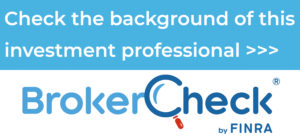DETERMINING IF IT MAKES SENSE TO MOVE OR REMODEL
Ensure you understand the available financing options.
THE HOUSING MARKET IS SURPRISINGLY STRONG RIGHT NOW. IF YOUR FAMILY NEEDS MORE SPACE, YOUR OPTIONS INCLUDE REMODELING YOUR CURRENT HOME, BUILDING A NEW ONE, OR BUYING ONE ALREADY ON THE MARKET. EACH ALTERNATIVE HAS ITS PROS AND CONS.
If you already own your home or have significantly paid down your mortgage, your first instinct might be to make it larger or more efficient. But you must weigh the time, expense, and inconvenience of remodeling against the pricier options of buying and building. Whichever choice you make, ensure you understand the available financing options.
Get ready for sticker shock
Housing prices rose over 10% in 2020 thanks to sharply lower inventory. (1) Accordingly, the average number of days on market for home sales fell significantly. Demand has been strong in all 50 of the largest U.S. metro markets, but your local real estate professionals can discuss housing prices for the neighborhoods that interest you. Mortgage interest rates are low, making it easier to finance homes despite inflated prices.
Remodeling lets you stay put
Some considerations that favor remodeling are proximity to schools, work, friends, and family. The cost will depend on the scope of the work and whether you’ll be contributing sweat equity. For 2020, whole-house renovations averaged between $15 and $60 per square foot, depending on home size, appliances, quality of materials, etc. (2) If you just want to remodel a bathroom or kitchen, expect to pay $100 to $250 per square foot. Remodeling builds equity, but don’t underestimate the hassle and inconvenience of living on a job site.
Homebuilding puts you in control
When you have strong ideas about the shape, size, layout, and location of your home, building it from scratch can make a lot of sense. The average cost to construct a new home in 2020 was $248,000, with cost per square foot ranging from $100 to $155. (3) You can simplify the process by buying a plan from a local homebuilder. Furthermore, manufactured and modular homes can go up quite quickly and are usually built to high standards. Don’t forget to factor in the cost of land, which can add considerably to the overall expense.
Homes in all price points are selling at inflated prices
In 2020, the median home price rose to more than $300,000, and was $307,000 in midyear. (4) As inventory narrows, you can expect prices to continue to rise. Budget constraints may have you looking at older homes, which means you will probably be inheriting some problems left over by the seller. Always use an independent home inspector before making a final bid, and budget for any immediate repairs.
Your home is your costliest investment
Financing a home purchase, construction, or renovation is an important factor in getting what you want at a price you can afford. Many people are eligible for FHA loans, but there are many other options. If you’ve got the housing bug, contact me to discuss how it fits into your overall financial plan. Together, we can figure out which alternative makes the most sense while observing your financial constraints.
Thanks for checking out the blog.
Gregory Armstrong , CFP®
This material is for general information only and is not intended to provide specific advice or recommendations for any
individual. There is no assurance that the views or strategies discussed are suitable for all investors or will yield positive
outcomes. Investing involves risks including possible loss of principal. This information is not intended to be a substitute for
specific individualized tax advice. We suggest that you discuss your specific tax issues with a qualified tax advisor.
This material was prepared by LPL Financial. Securities and advisory services offered through LPL Financial (LPL), a registered investment advisor and
broker-dealer (member FINRA/SIPC).
Insurance products are offered through LPL or its licensed affiliates. To the extent you are receiving investment advice from a separately registered independent investment advisor that is not an LPL Financial affiliate, please note LPL Financial makes no representation with respect to such entity.
Securities and insurance offered through LPL or its affiliates are: 









